-
 Bitcoin
Bitcoin $104,722.1303
-0.49% -
 Ethereum
Ethereum $2,510.3575
-0.79% -
 Tether USDt
Tether USDt $1.0004
0.02% -
 XRP
XRP $2.1340
-0.10% -
 BNB
BNB $643.2028
-1.24% -
 Solana
Solana $144.1568
-1.07% -
 USDC
USDC $0.9999
0.02% -
 Dogecoin
Dogecoin $0.1773
-0.18% -
 TRON
TRON $0.2704
0.19% -
 Cardano
Cardano $0.6227
-1.80% -
 Hyperliquid
Hyperliquid $39.7713
-2.40% -
 Sui
Sui $2.8435
-5.98% -
 Chainlink
Chainlink $13.0126
-1.21% -
 Bitcoin Cash
Bitcoin Cash $426.2416
-1.17% -
 UNUS SED LEO
UNUS SED LEO $9.0479
0.07% -
 Avalanche
Avalanche $18.9410
-1.03% -
 Stellar
Stellar $0.2557
-1.02% -
 Toncoin
Toncoin $2.9331
-1.76% -
 Shiba Inu
Shiba Inu $0.0...01202
0.69% -
 Hedera
Hedera $0.1538
-1.23% -
 Litecoin
Litecoin $84.9237
0.48% -
 Polkadot
Polkadot $3.7576
-1.44% -
 Ethena USDe
Ethena USDe $1.0004
0.00% -
 Monero
Monero $311.9143
-0.40% -
 Dai
Dai $0.9999
0.01% -
 Bitget Token
Bitget Token $4.5264
0.16% -
 Pepe
Pepe $0.0...01091
0.82% -
 Uniswap
Uniswap $7.2289
-2.48% -
 Pi
Pi $0.6084
7.60% -
 Aave
Aave $270.4921
-3.35%
Sharp drop in late trading: Is it a wash or shipment?
A sharp drop in late trading may signal wash trading or whale activity, impacting price action through artificial volume or real selling pressure.
Jun 13, 2025 at 04:36 pm
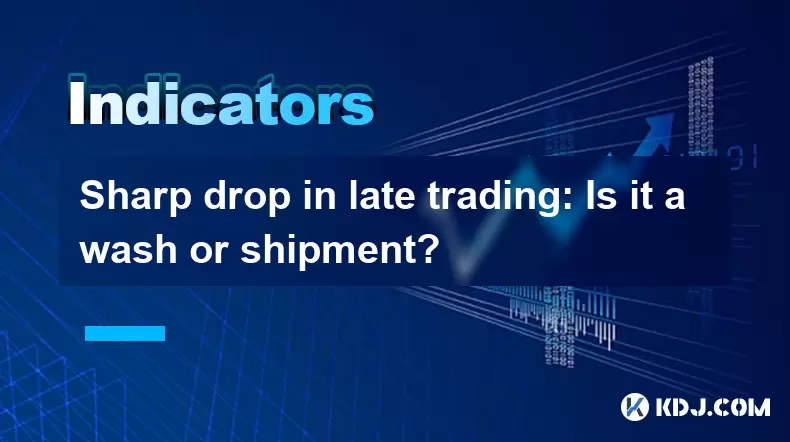
Understanding the Sharp Drop in Late Trading
A sharp drop in late trading often raises concerns among cryptocurrency traders and investors. This phenomenon refers to a sudden, significant decline in the price of a digital asset during off-peak hours or after regular market activity has slowed down. The timing is critical because lower trading volumes during these periods can amplify price swings, leading to exaggerated movements that may not reflect the true market sentiment.
One common question is whether this drop is due to wash trading or shipment selling. Understanding the difference between these two mechanisms is essential for interpreting market behavior accurately.
What Is Wash Trading?
Wash trading involves an individual or group simultaneously buying and selling an asset to create artificial trading volume. This deceptive practice aims to mislead other traders into believing there is more genuine interest in the asset than there actually is. In the context of cryptocurrencies, wash trading is often used by exchanges or whales to manipulate prices and attract retail investors.
- Creating false liquidity: Traders generate fake trades to give the impression of high liquidity.
- Manipulating price action: Artificial buy or sell walls can influence market direction.
- Inflating volume metrics: Platforms inflate 24-hour trading volume numbers to appear more credible.
When a sharp drop occurs, it's important to analyze order book depth and trade history to detect signs of wash trading. If large transactions are executed between a small number of addresses or repeated circular trades occur, it may indicate manipulative practices rather than organic market movement.
Identifying Shipment Selling Patterns
Shipment selling, on the other hand, typically refers to a large holder (often called a whale) gradually dumping their holdings onto the market. Unlike wash trading, shipment selling reflects real selling pressure but is executed in a way that avoids immediate detection.
- Large-volume trades from single wallets: Monitoring blockchain analytics tools can reveal if a major wallet is transferring coins to exchanges.
- Gradual price erosion: Instead of a single crash, the price slowly declines as orders are placed just above existing bids.
- Volume spikes without corresponding news: A sudden increase in volume without any fundamental catalyst may signal institutional or whale activity.
This type of selling often precedes a larger downtrend and can be particularly impactful during low-liquidity hours when fewer buyers are present to absorb the increased supply.
How to Analyze Market Depth During a Sharp Drop
Market depth analysis is crucial for distinguishing between wash trading and real selling pressure. It provides insight into the orders waiting to be executed at different price levels.
- Examine the bid-ask spread: A wide spread during a drop may suggest thin liquidity and potential manipulation.
- Look for spoofing patterns: Large orders that appear and disappear quickly without execution are red flags.
- Check for order imbalances: If sell orders significantly outweigh buy orders, it may indicate genuine distribution.
Tools like Glassnode, CryptoQuant, and CoinGecko Pro offer advanced market depth visualizations that help traders assess whether the drop is driven by real demand or artificial activity.
On-Chain Indicators That Help Differentiate Between Wash and Shipment
On-chain data plays a pivotal role in understanding whether a sharp drop is due to wash trading or shipment selling.
- Exchange inflows/outflows: Sudden spikes in exchange inflows might signal whales preparing to sell.
- Whale transaction tracking: Tools like Whale Alert track large transfers across blockchains and can identify suspicious activity.
- Netflow metrics: Positive netflow into exchanges indicates accumulation; negative netflow suggests withdrawal and potential long-term holding.
By cross-referencing these on-chain signals with candlestick patterns and volume profiles, traders can better determine whether the late-night drop was orchestrated or organic.
Frequently Asked Questions
Q1: Can I completely avoid losses during a sharp drop in late trading?
While it's difficult to avoid all losses, setting stop-loss orders, using time-based alerts, and diversifying your portfolio can help mitigate risk during volatile late-night sessions.
Q2: How do I differentiate between a whale dump and normal market correction?
Whale dumps usually involve large-volume transfers from known whale wallets, lack fundamental triggers, and often occur during low-liquidity periods. Normal corrections typically follow broader market trends or news events.
Q3: Are all sharp drops in late trading indicative of manipulation?
No, not all late drops are manipulated. Sometimes macroeconomic factors, global news, or technical adjustments on exchanges can cause unexpected volatility even during off-hours.
Q4: What tools should I use to monitor for wash trading or shipment selling?
You can use platforms like Glassnode, CryptoQuant, CoinGecko Pro, and Whale Alert to monitor on-chain activity, exchange flows, and large transactions in real-time.
Disclaimer:info@kdj.com
The information provided is not trading advice. kdj.com does not assume any responsibility for any investments made based on the information provided in this article. Cryptocurrencies are highly volatile and it is highly recommended that you invest with caution after thorough research!
If you believe that the content used on this website infringes your copyright, please contact us immediately (info@kdj.com) and we will delete it promptly.
- DOGE, $PEPE Alongside $BONK and FLOKI Could Reach Returns from 5x to 100x
- 2025-06-15 01:50:13
- Kitchener Clinic parking fees going up on May 1
- 2025-06-15 01:50:13
- BetMGM Bonus Code CUSE150 Delivers Upgraded Promos for Warriors vs. Rockets and Timberwolves vs. Lakers Game 5
- 2025-06-15 01:45:13
- May 2025's Hottest Pre-Sale Tokens Are Ready to Explode
- 2025-06-15 01:45:13
- Web3 Leaders Praise UnionBank Crypto Rollout, Eyeing Corporate Integration
- 2025-06-15 01:40:12
- Australia's financial regulator is going after inactive crypto companies still appearing on official lists
- 2025-06-15 01:40:12
Related knowledge
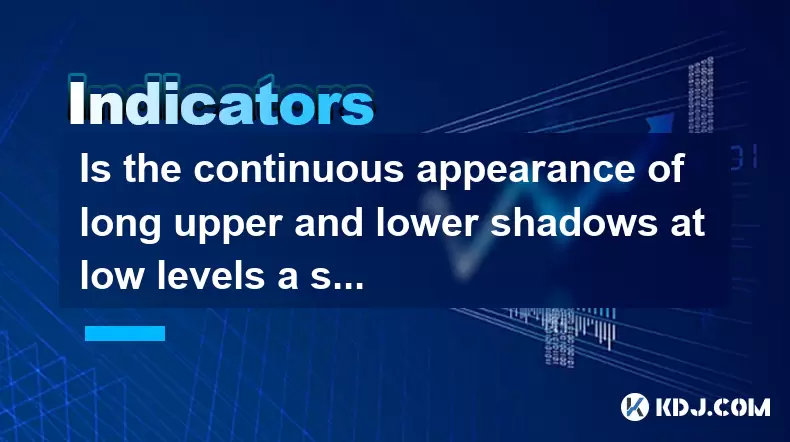
Is the continuous appearance of long upper and lower shadows at low levels a signal of accumulation?
Jun 15,2025 at 01:43am
Understanding Long Upper and Lower Shadows in Candlestick ChartsIn the world of cryptocurrency trading, candlestick patterns are widely used to analyze price movements. A long upper shadow, also known as a wick or tail, indicates that the price rose significantly during the period but was pushed back down by selling pressure. Conversely, a long lower sh...
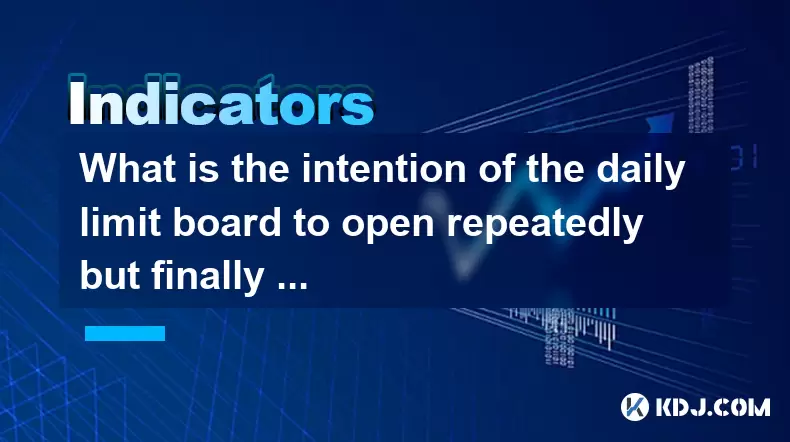
What is the intention of the daily limit board to open repeatedly but finally close?
Jun 15,2025 at 01:08am
Understanding the Daily Limit Board in Cryptocurrency TradingIn cryptocurrency trading, a daily limit board refers to a price movement restriction mechanism applied by certain exchanges or regulatory bodies. This mechanism is primarily used to prevent extreme volatility and panic selling or buying during periods of intense market fluctuation. When an as...

How to calculate the probability of trend continuation after the MACD column divergence?
Jun 14,2025 at 08:01am
Understanding MACD Column DivergenceThe Moving Average Convergence Divergence (MACD) is a widely used technical indicator in cryptocurrency trading. The MACD column, also known as the histogram, represents the difference between the MACD line and the signal line. When price makes a new high or low but the MACD histogram does not confirm this movement, a...

What are the volume requirements for adjusting the K line in the "rising three methods" pattern?
Jun 14,2025 at 07:50am
Understanding the 'Rising Three Methods' Pattern in Cryptocurrency TradingThe 'rising three methods' pattern is a bullish continuation candlestick formation that traders often use to identify potential upward momentum in cryptocurrency price charts. This pattern typically appears during an uptrend and suggests that the trend is likely to continue after ...
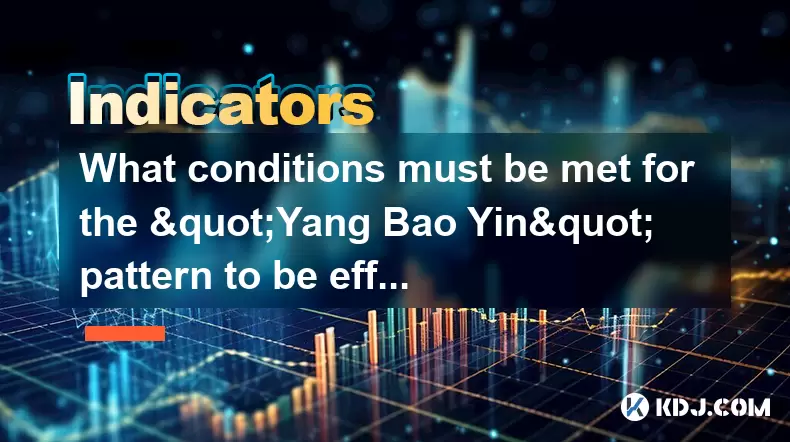
What conditions must be met for the "Yang Bao Yin" pattern to be effective?
Jun 14,2025 at 06:42am
Understanding the 'Yang Bao Yin' Pattern in Cryptocurrency TradingThe Yang Bao Yin pattern is a candlestick formation commonly observed in technical analysis within the cryptocurrency market. This pattern typically signals a potential bullish reversal after a downtrend. However, for this pattern to be effective and reliable, certain conditions must be m...
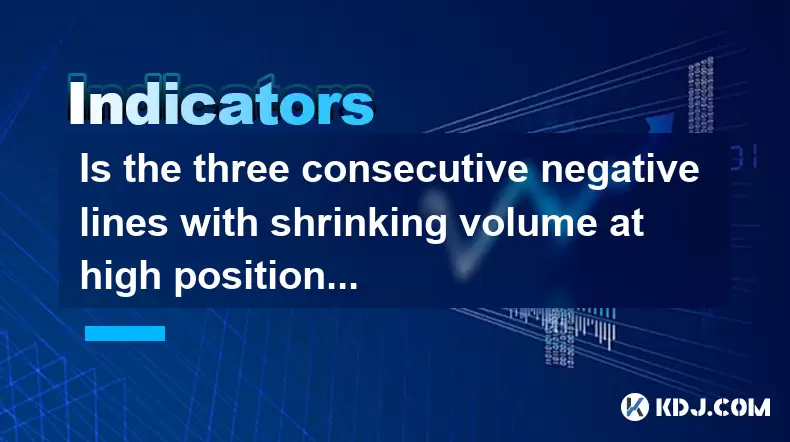
Is the three consecutive negative lines with shrinking volume at high positions a signal that the main force has finished shipping?
Jun 14,2025 at 09:56am
Understanding the Concept of Three Consecutive Negative LinesIn cryptocurrency trading, three consecutive negative lines refer to a situation where an asset's price chart shows three successive candlesticks with closing prices lower than their opening prices. This pattern typically indicates bearish sentiment in the market. When this occurs at high posi...

Is the continuous appearance of long upper and lower shadows at low levels a signal of accumulation?
Jun 15,2025 at 01:43am
Understanding Long Upper and Lower Shadows in Candlestick ChartsIn the world of cryptocurrency trading, candlestick patterns are widely used to analyze price movements. A long upper shadow, also known as a wick or tail, indicates that the price rose significantly during the period but was pushed back down by selling pressure. Conversely, a long lower sh...

What is the intention of the daily limit board to open repeatedly but finally close?
Jun 15,2025 at 01:08am
Understanding the Daily Limit Board in Cryptocurrency TradingIn cryptocurrency trading, a daily limit board refers to a price movement restriction mechanism applied by certain exchanges or regulatory bodies. This mechanism is primarily used to prevent extreme volatility and panic selling or buying during periods of intense market fluctuation. When an as...

How to calculate the probability of trend continuation after the MACD column divergence?
Jun 14,2025 at 08:01am
Understanding MACD Column DivergenceThe Moving Average Convergence Divergence (MACD) is a widely used technical indicator in cryptocurrency trading. The MACD column, also known as the histogram, represents the difference between the MACD line and the signal line. When price makes a new high or low but the MACD histogram does not confirm this movement, a...

What are the volume requirements for adjusting the K line in the "rising three methods" pattern?
Jun 14,2025 at 07:50am
Understanding the 'Rising Three Methods' Pattern in Cryptocurrency TradingThe 'rising three methods' pattern is a bullish continuation candlestick formation that traders often use to identify potential upward momentum in cryptocurrency price charts. This pattern typically appears during an uptrend and suggests that the trend is likely to continue after ...

What conditions must be met for the "Yang Bao Yin" pattern to be effective?
Jun 14,2025 at 06:42am
Understanding the 'Yang Bao Yin' Pattern in Cryptocurrency TradingThe Yang Bao Yin pattern is a candlestick formation commonly observed in technical analysis within the cryptocurrency market. This pattern typically signals a potential bullish reversal after a downtrend. However, for this pattern to be effective and reliable, certain conditions must be m...

Is the three consecutive negative lines with shrinking volume at high positions a signal that the main force has finished shipping?
Jun 14,2025 at 09:56am
Understanding the Concept of Three Consecutive Negative LinesIn cryptocurrency trading, three consecutive negative lines refer to a situation where an asset's price chart shows three successive candlesticks with closing prices lower than their opening prices. This pattern typically indicates bearish sentiment in the market. When this occurs at high posi...
See all articles

























































































